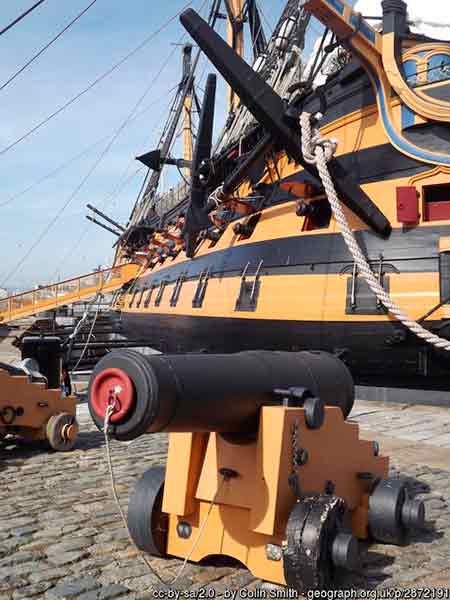Sowley Ironworks
Sowley lies close to the Solent and around 3 kilometres (2 miles) from Beaulieu village. It is in the south-western corner of the parish and until 1958, when Sowley House and the Sowley Estate were sold off, was also at the south-western edge of the Beaulieu Estate.
(1) Sowley Ironworks - the early years
Perhaps surprisingly, Sowley was the site of an ironworks from the 1590s until working ceased by the 1820s.
The iron industry was typically concentrated close to coalfields, but Sowley, too, enjoyed favourable conditions needed for the works to succeed - ironstone was found relatively locally, at Hengistbury Head and Hordle Cliffs, was collected from along the Solent shore and was also shipped in from Spain and Sweden; water from Sowley Pond was available to power the bellows and drive the forge hammers; and Beaulieu and other woodlands provided fuel to heat the furnace and charcoal to make cast iron.

Started in around 1600 by Henry Wriothesley, 3rd Earl of Southampton and a descendent of Thomas Wriothesley - who had acquired Beaulieu Abbey and its lands following the Dissolution of the Monasteries in the 1540s - it was intended that the Sowley blast furnace would produce pig iron whilst a forge at the former Titchfield Abbey, also owned by the Wriothesley family, would use the pig iron to produce wrought iron.
Fuel for the new works was, however, something of an issue for a 1605 mention of the ironworks refers to 'the newly erected ironworks at Bewley and Titchfield' which were leading to a scarcity of wood.
Ownership of Beaulieu and Titchfield Abbeys separated in 1667 when the Wriothesley line ended with no male heirs - the estates were then divided between the daughters, with the youngest, Elizabeth, inheriting Beaulieu.
However, iron making connections between Sowley and Titchfield continued until at least the end of the 17th century when Ralph Montagu, later to be 1st Duke of Montagu - who had married Lady Elizabeth Wriothesley - invested around £2,000, equivalent to over £150,000 in modern terms, to repair the furnace and build a new forge at Sowley so that the complete iron making process could be undertaken there.
The works were refurbished in 1722 and further investment came in the mid-1740s when, perhaps encouraged by the commencement of shipbuilding - a ready market for ironworks - at Buckler's Hard, the Duke of Montagu agreed to contribute £400 for the building of a new furnace and an air furnace in return for an addition of 5% to the £40 annual rent.
The ironworks continued, then, to operate during the second half of the 18th century, but with variable success, despite further expenditure on equipment improvements and replacements, making amongst other things guns for the navy, iron for ships' ballast and nails and other hardware for the shipbuilders of Buckler's Hard.
(2) Sowley Ironworks - later decline

Decline, though, was almost inevitable and mirrored trends nationally as small local ironworks were superseded by larger units close to or in large towns, and with ready access to iron and coal, and / or closer to large potential customers.
By 1770 the furnace at Sowley was no longer in use and the forge ceased to operate until 1789 when it was resuscitated by Charles Pocock, the then tenant, in conjunction with Henry Adams, the Buckler's Hard shipbuilder.
Following the end of the Napoleonic Wars in 1815, demand for iron from the navy and from naval shipbuilders much reduced such that by 1817 the last tenant of the ironworks owed nearly £1,000 for rent and coppice wood. The debt was never cleared and the tenancy ended in 1822. The Beaulieu estate then paid a bricklayer the princely sum of £4 12s 6d to take down 'the old buildings at Sowley late part of the forge'.
John Wise, chronicler of the New Forest and the ways of its people, writing in the 1860s, mentioned Sowley ironworks, noting that the tilt-hammers 'have long since been stopped, driven out of the field by the Staffordshire ironworks. Nothing now remains to tell their former importance but a few mounds and the village Forge-Hammer Inn, and a country proverb, There will be rain when Sowley hammer is heard'.
The proverb was probably most applicable when the wind carried the sound on towards the Forest people and also reflected the fact that sound often carries further in the atmospheric conditions immediately before rainfall, but even at the time of writing, Wise noted that its meaning was fast being lost.
Nothing now remains to be seen apart from barely discernable bumps and hollows - a little south of Sowley Lane, close its junction with Sandpit Lane, and west of the narrow stream leading from Sowley Pond to the Solent - that remind of this once busy industrial site.
Note: There is no public access to the site of Sowley Ironworks.
Find out more about Sowley's fascinating history
References:
Presentation to the Beaulieu History Society: Catharina van der Vorm and Emma Page
Bucklers Hard - a rural shipbuilding centre: A.J. Holland
An Album of Old Beaulieu: Susan Tomkins
Various Wikipedia pages
Quick links
More links
Other related links
Search this site

